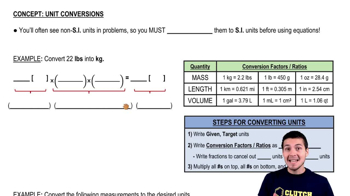Here are the essential concepts you must grasp in order to answer the question correctly.
Hydrostatic Pressure
Hydrostatic pressure is the pressure exerted by a fluid at equilibrium due to the force of gravity. It increases with depth in a fluid, calculated using the formula P = ρgh, where P is pressure, ρ is the fluid density, g is the acceleration due to gravity, and h is the depth. In the ocean, seawater has an average density of about 1025 kg/m³, which is essential for calculating the pressure at great depths.
Recommended video:
Pressure and Atmospheric Pressure
Atmospheric Pressure
Atmospheric pressure is the pressure exerted by the weight of the atmosphere above a given point. At sea level, this pressure is approximately 101.3 kPa, or 1 atmosphere (atm). When calculating pressure at depth in the ocean, it is important to consider that the pressure increases by about 1 atm for every 10 meters of water depth, adding to the atmospheric pressure at the surface.
Recommended video:
Pressure and Atmospheric Pressure
Pressure Conversion
Pressure conversion is the process of translating pressure measurements from one unit to another, such as from pascals (Pa) to atmospheres (atm). Since 1 atm is equivalent to 101,325 Pa, understanding how to convert between these units is crucial for interpreting pressure values at different depths. This conversion allows for a clearer understanding of the extreme conditions present in deep ocean environments.
Recommended video:



